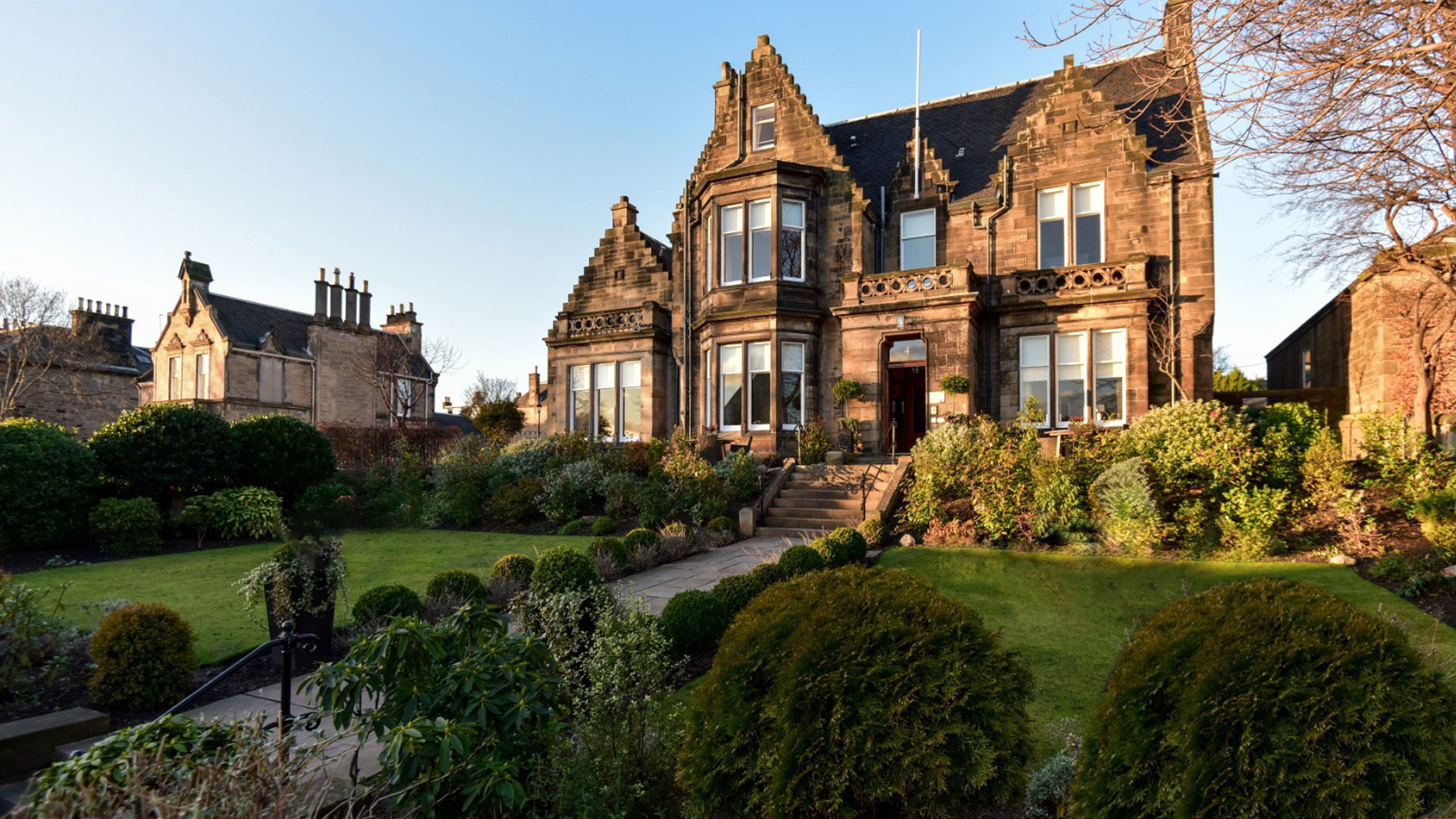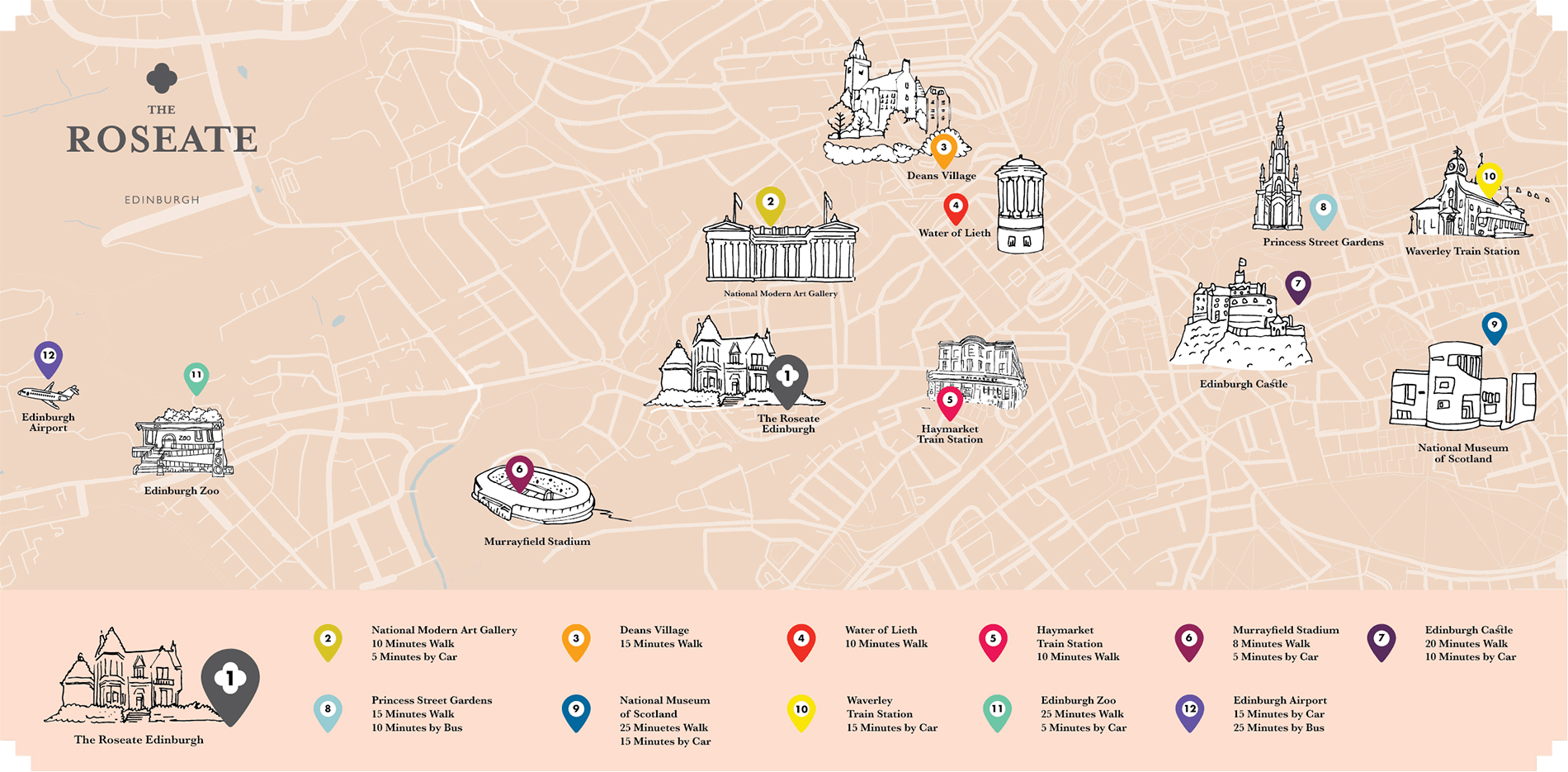explore
Edinburgh
A trail that meanders through the World Heritage Sites of Edinburgh.
“In 1995 UNESCO recognised the unique character of Edinburgh with its medieval Old Town sitting in immediate contrast above its Georgian New Town. This walk will take you into the heart of the World Heritage Site by a meandering scenic route. This walk can be completed in around 30 minutes.
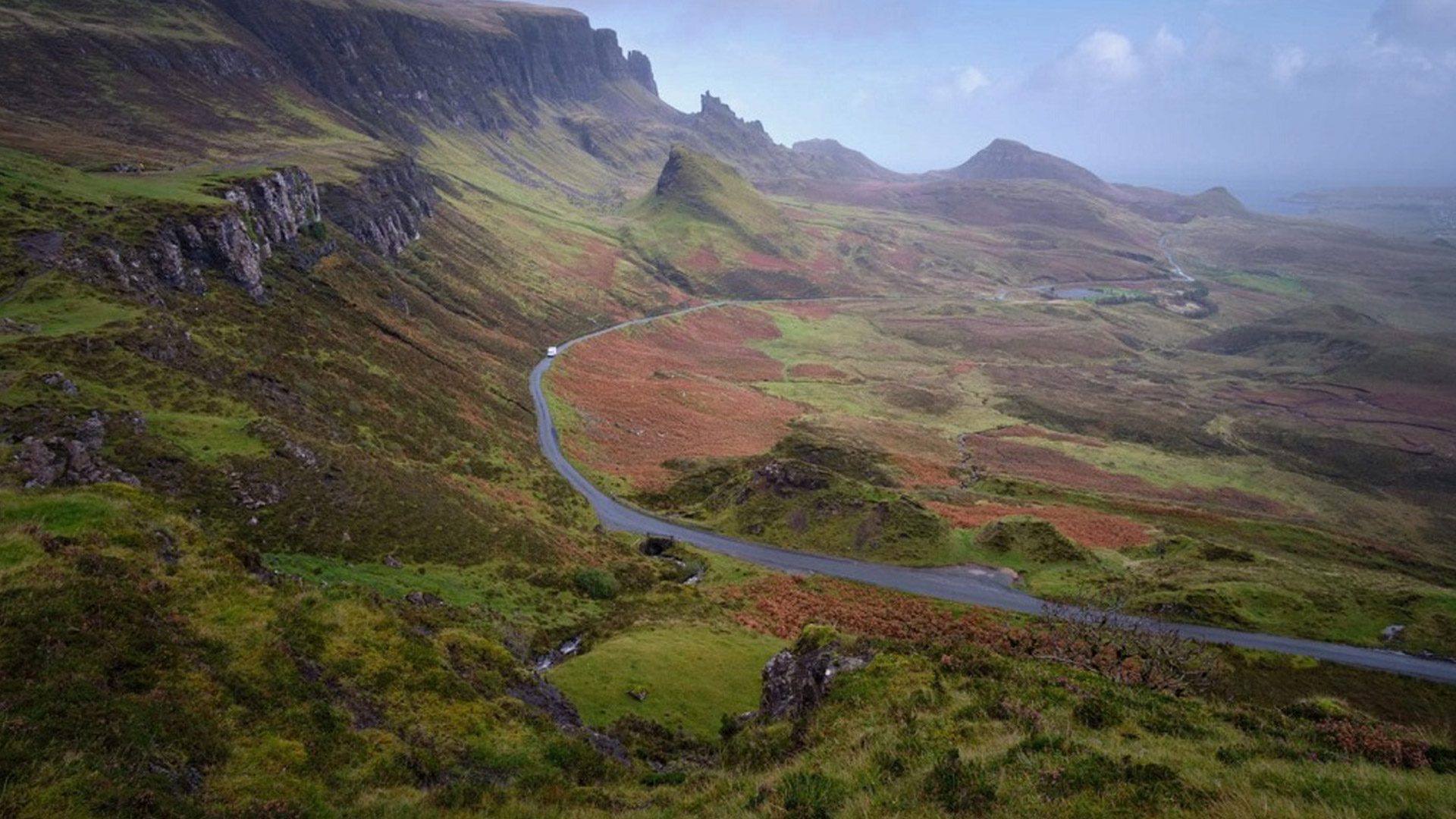
STOP 1: THE Roseate Edinburgh
The two facing buildings which make up The Roseate Edinburgh, 4 West Coates (the erstwhile Dunstane Villa) and 5 Hampton Terrace, were completed in 1866 and 1869 respectively. From the beginning the houses were linked. Thomas Gill, a wealthy silk merchant, lived in Dunstane Villa with two servants, while his sister, Margaret lived at number 5 with her husband Archibald Shearer (music seller), their three children and two servants. Later owners of Dunstane Villa included Sir Henry Ross, proprietor of the Scotsman Newspaper, and in the mid twentieth century the Royal Bank of Scotland who used the villa as a training centre. Following their departure in the 1970s the villa was converted to become a hotel.
Look out for:
The church at 7 Hampton Terrace was originally the Roseburn Free Church. Constructed in 1868, it is now ‘Bible House’ – headquarters of The Scottish Bible Society.
Turn left towards the city centre, following the line of the old turnpike toll road from Glasgow.
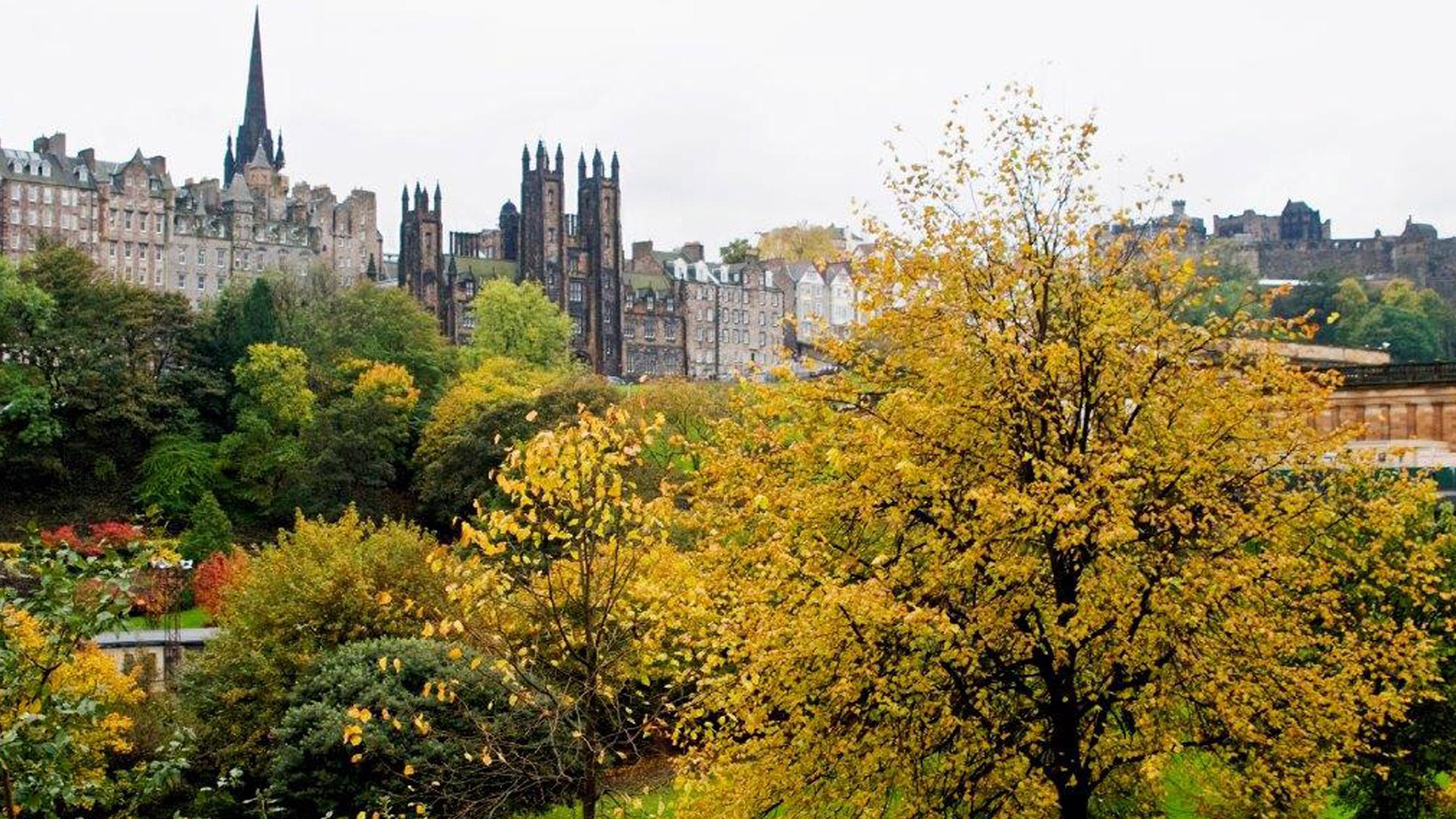
STOP 2: DONALDSON’S
Through the railings on your left you can see a magnificent building that looks like a great palace standing in extensive grounds. It was originally known as Donaldson’s Hospital. Its construction was funded by a legacy from James Donaldson of £210,000 to build and endow an ‘orphan school’. The accommodation for 300 children was designed by William H Playfair one of Scotland’s greatest architects. It became a pioneering school for the deaf. The school is now relocated in modern premises elsewhere and the building has been converted to residential use.
Look out for:
On the east corner of the property at the corner of Magdala Crescent, a disused Police Box with classical embellishme+B251nts to reflect Edinburgh’s status as Athens of the North!
West Coates becomes Haymarket Terrace. Continue to the crossroads known as the Haymarket.
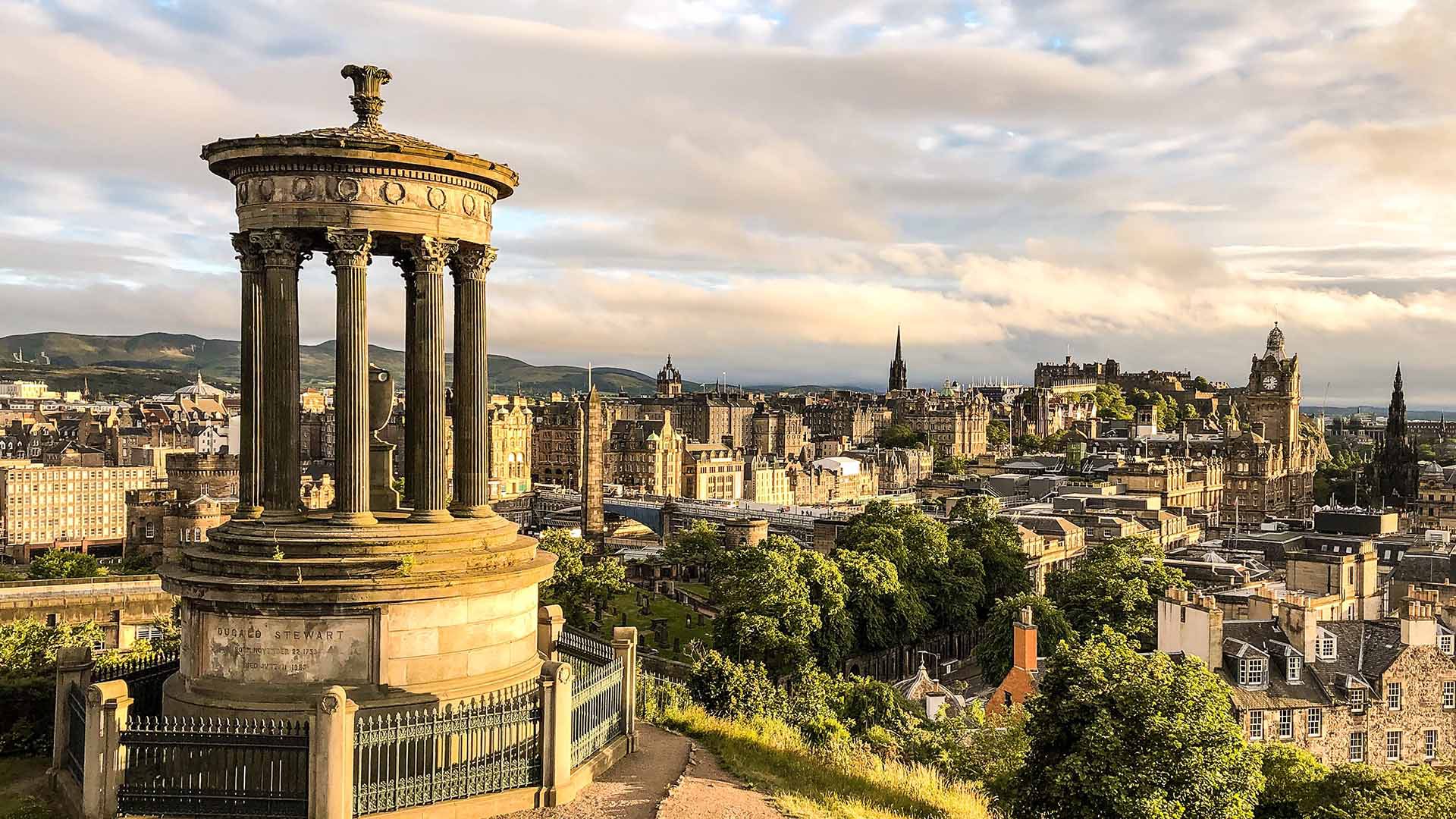
STOP 3: HAYMARKET
This busy crossroad, formerly known as the Hayweights, was once a market for the auction of animal feed and other agricultural items. It is now best known as the location of central Edinburgh’s western train station linked by tunnel to the main station at Waverley. Refurbished in the early 21st century the modern station retains the original railway station building as its entrance hall. This was built in 1840 for the Edinburgh and Glasgow Railway. Its pillared entrance pays lip service to the classical architecture of the New Town. The clock atop the building was crafted by the prestigious Edinburgh clockmaker James Ritchie.
Look out for:
The Haymarket Clock In the middle of the crossroads is a memorial to Hearts football players who lost their lives in World War 1. An annual memorial service is held here on Armistice Day, November 11.
Ryrie’s Bar, a traditional railway tavern established in 1868, which has original stained glass windows advertising their products from Edinburgh’s historic breweries and distilleries.
Walk along West Maitland Street and turn left into Palmerston Place. Walk to:
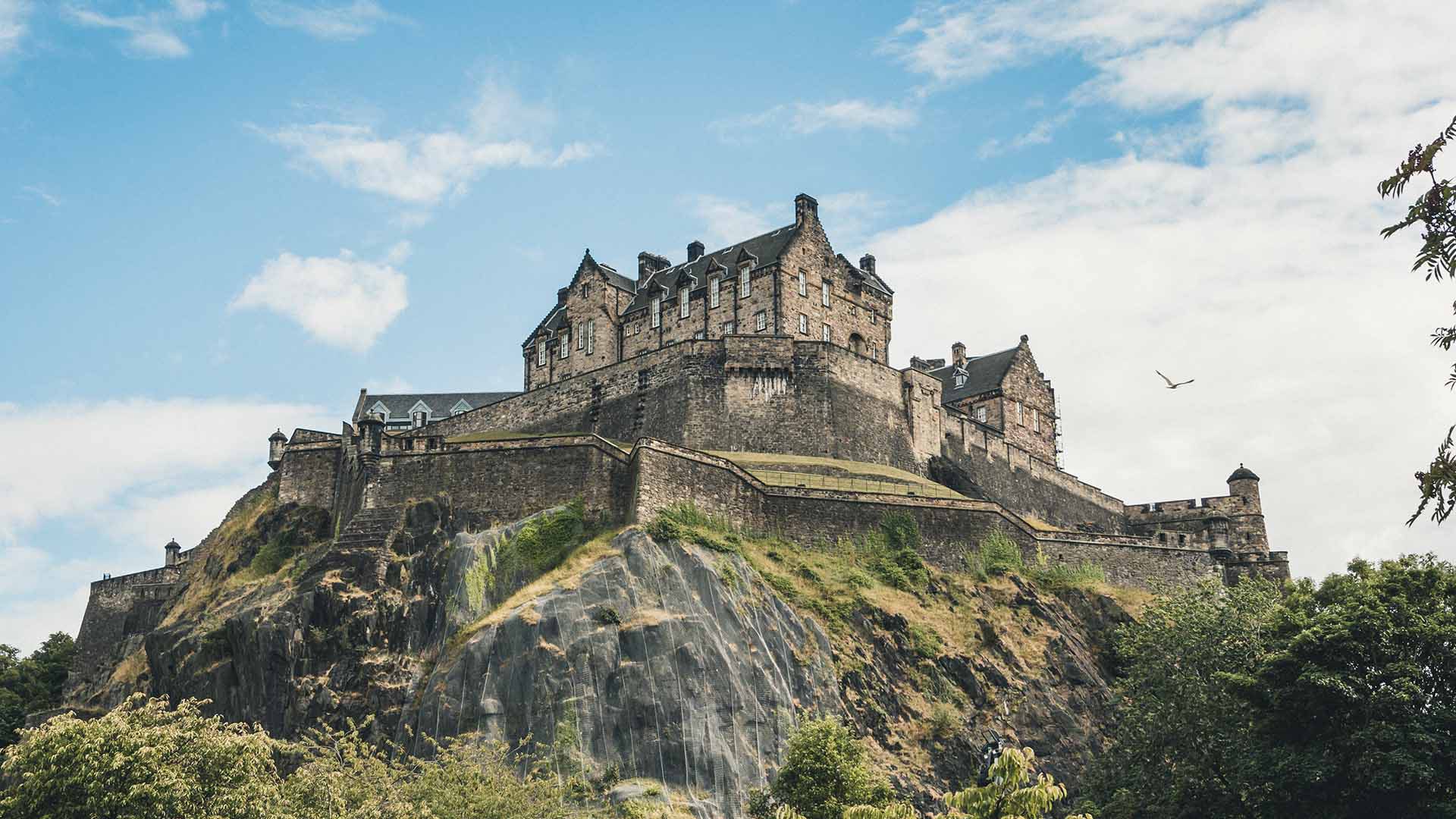
STOP 4: ST MARY’S EPISCOPAL CATHEDRAL
A massive Gothic style cathedral begun in 1874, was financed by a legacy from the Walker sisters of East Coates. Its three spires dominate the western skyline of Edinburgh – the western spires were completed in 1917.
Look out for:
The family pew of the Scottish author Sir Walter Scott. A brass lectern with a pelican and its chicks. The beautiful marble altar of the Lady Chapel. Exit via the main door and turn right to view the buildings in the northern grounds of the cathedral
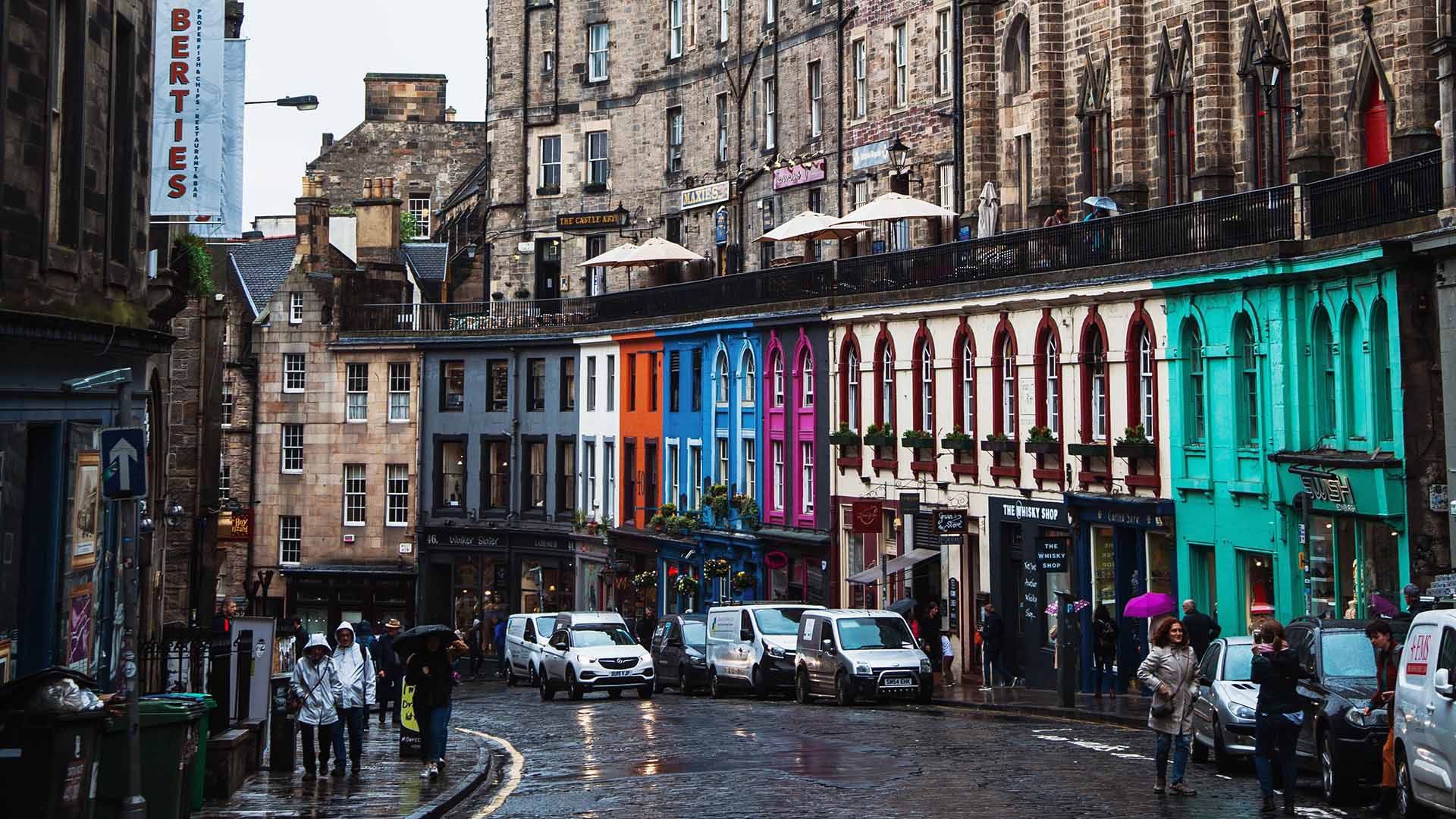
STOP 5: OLD COATES HOUSE
Dating from around 1615 this is one of the oldest dwelling houses in what is now the New Town.
Look out for:
The carvings in the pediment above one window include the date 1615 and the initials IB. These are the initials of John Byres (Iannes Byris) the original owner.
Retrace your route past the cathedral door then turn left into the footpath to the south of the cathedral until you reach Manor Place. Cross to William Street and enter this charming lane.
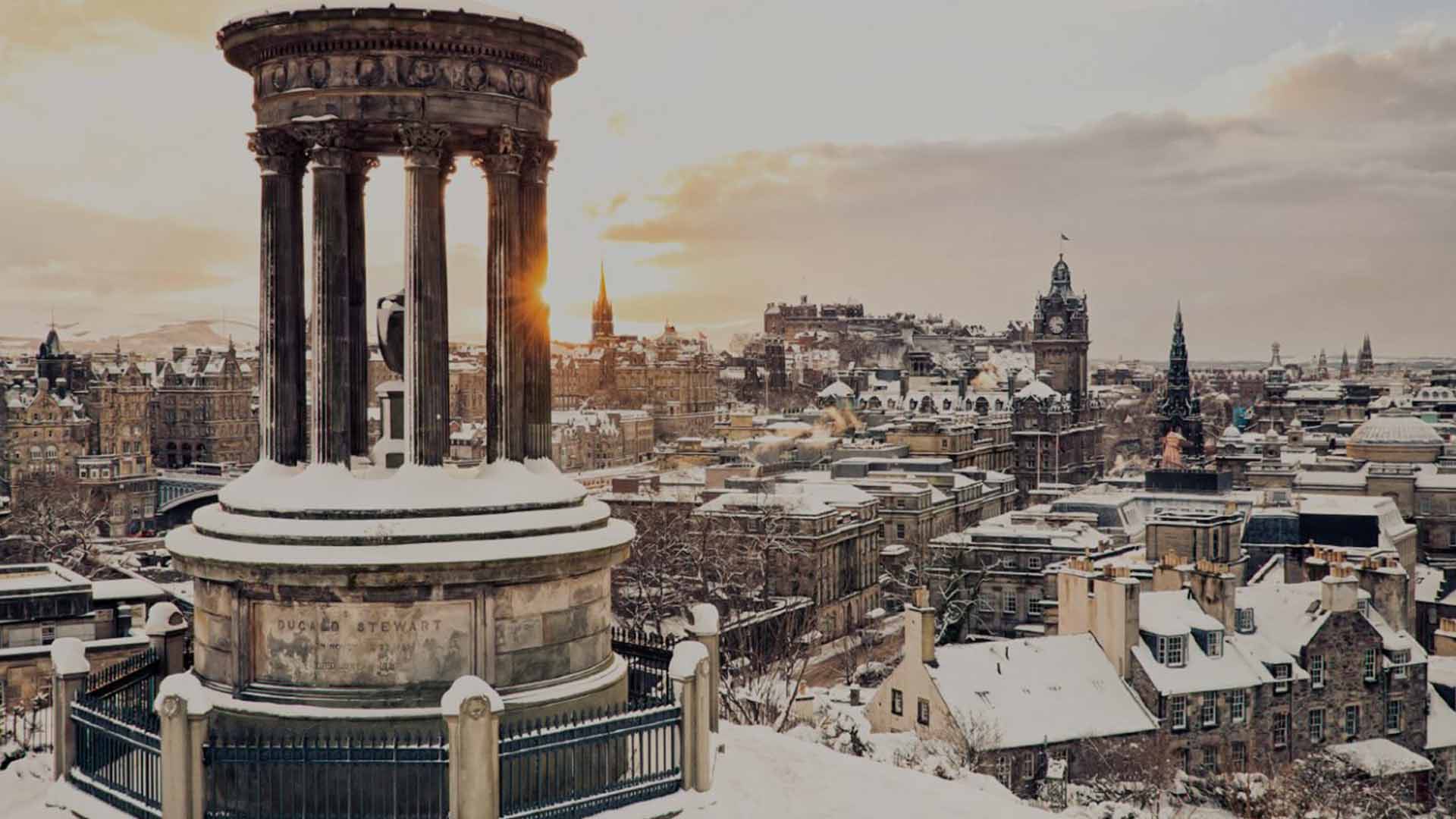
STOP 6: WILLIAM STREET
Dating to 1824 this was a street of shops, artisan dwellings and also byres for the local dairy. It retains many original features and Edinburgh World Heritage has worked with the shop owners to preserve the original shopfronts.
Look out for:
The wrought iron platforms in front of the windows which were used originally to give potential shoppers closer access to view the products on display.
From William Street turn right into Walker Street and thereafter turn left into Coates Crescent.
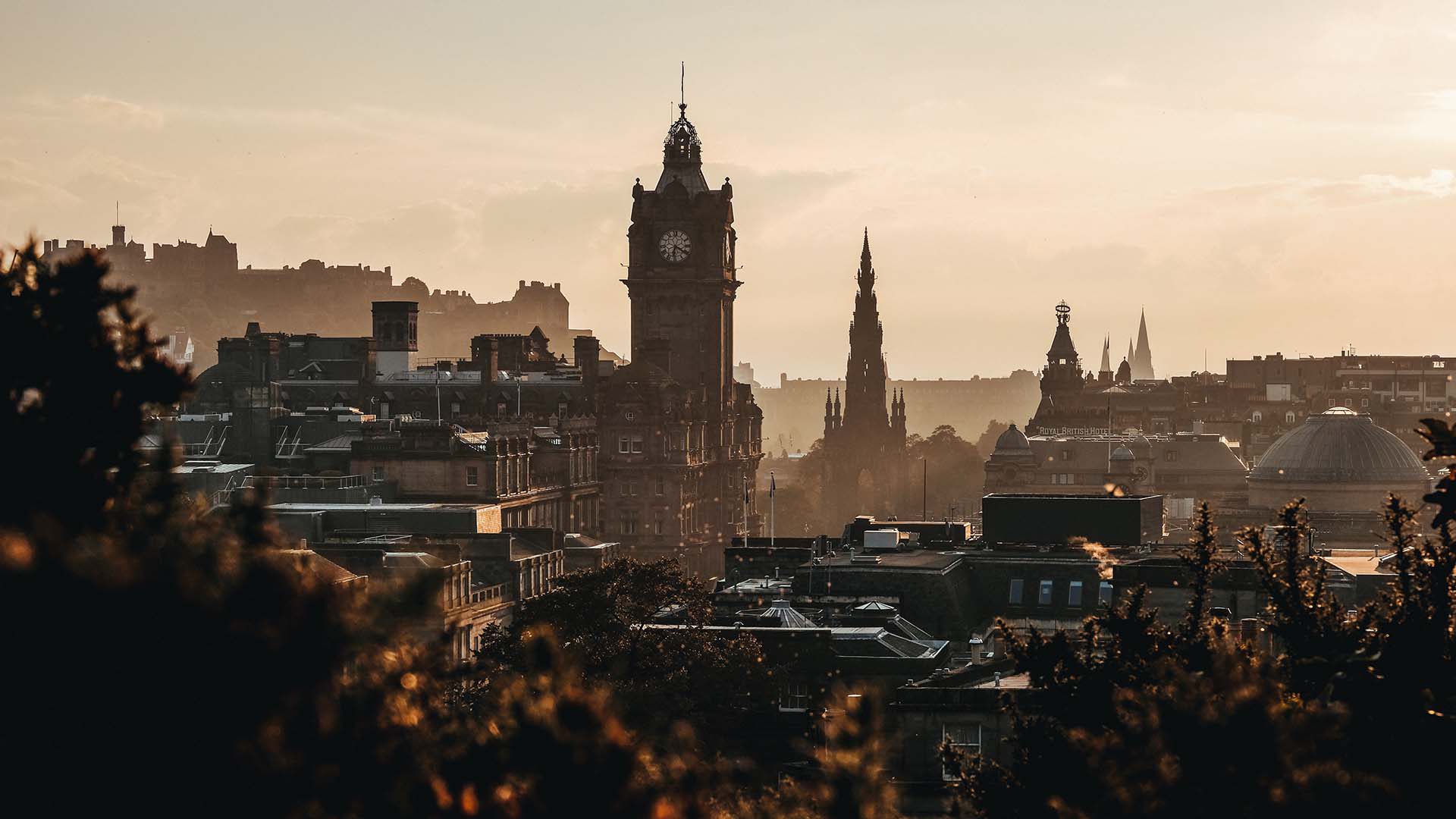
STOP 6: COATES CRESCENT
This is a beautiful New Town crescent which was built from 1813, and designed by architect Robert Brown.
Look out for:
The splendid wrought iron balustrades which give a sense of unity to the street. Fan lights above doorways to flood entrance halls with light – No. 3 is particularly fine. Original iron boot scrapers at some of the entrance bridges.
From Coates Crescent walk along Shandwick Place to the ‘West End’ at Princes Street.
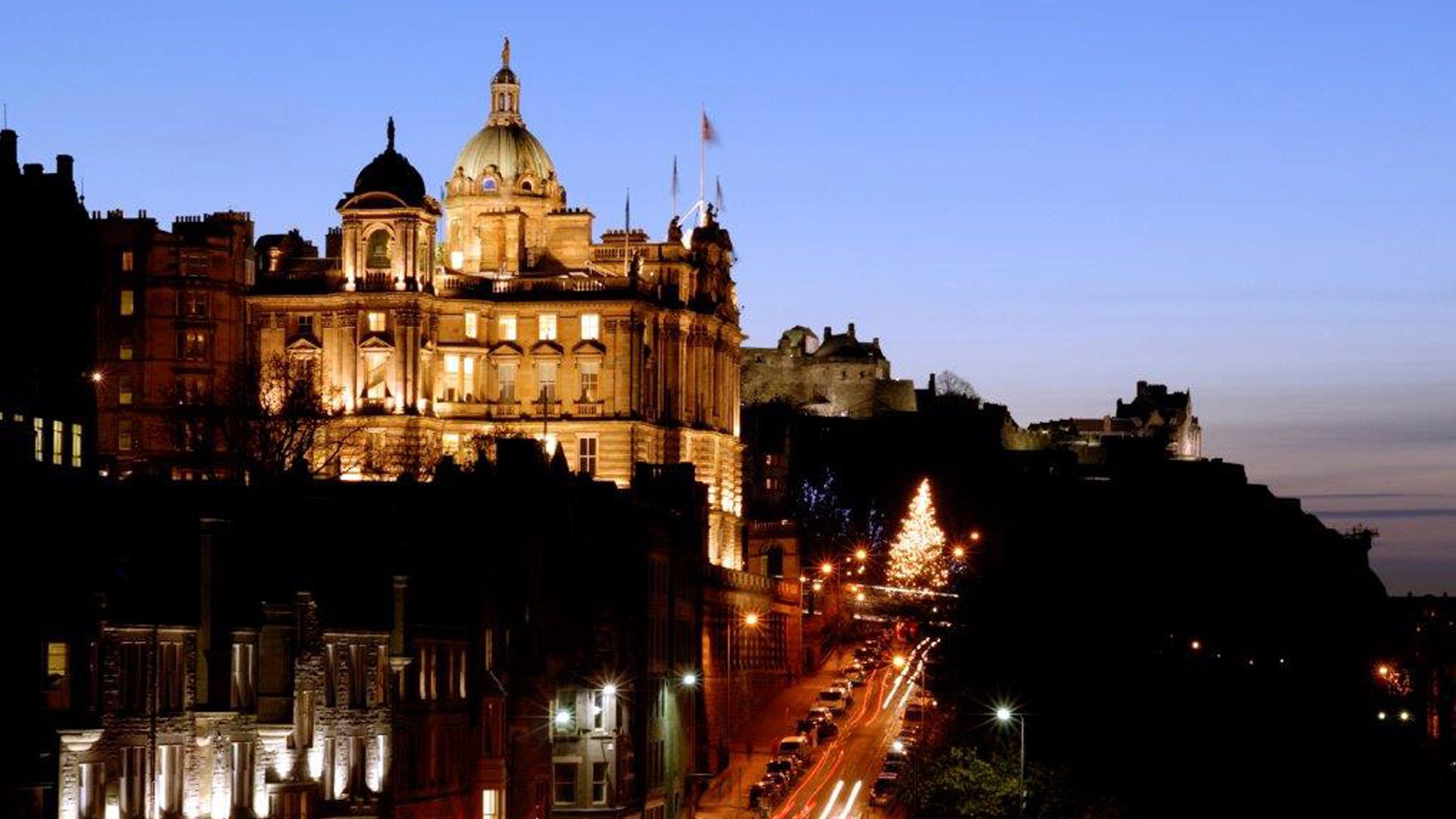
STOP 7: WEST END (BENEATH FRASER’S CLOCK)
Standing here in the heart of the New Town you can get a wonderful view of Edinburgh Castle which is on the western side of the Old Town. From here you can begin your exploration of the World Heritage Site.
+44 131 337 6169

